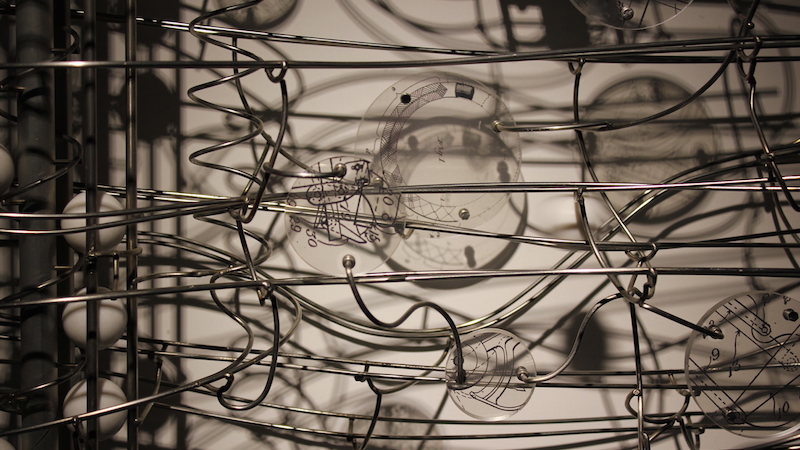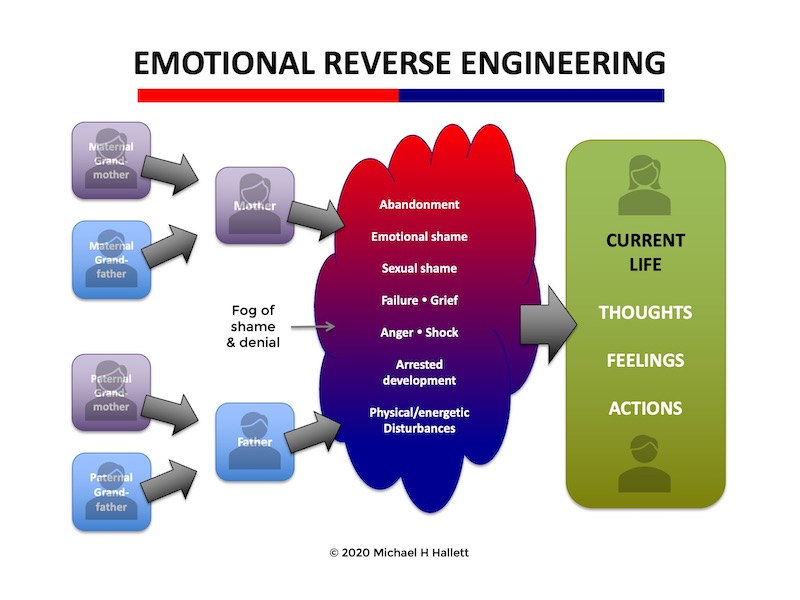“Pipes everywhere” – how Process Manufacturing maps human emotions
- 10 July 2020
- Posted by: Michael H Hallett
- Category: Emotional principles , Mother wound ,

I used to work at the largest cannery in the southern hemisphere. Back in the 1980s, the cannery sold vast quantities of tomato sauce, baked beans and tinned fruit. It knew how to price them to make a profit—but it didn’t know what they actually cost to make.
I was part of the team given the task of creating the software to figure this out.
“Pipes everywhere”
I can remember standing on a gantry, high above the factory floor, looking down on a swirling maelstrom of people, machines, forklifts, ingredients, packaging, pallets, tin cans, electrical cables. Pipes gurgled with water, fruit syrup and tomato paste. One of the factory staff mumbled, “Pipes everywhere.”
If my life had to be reduced to two words, it would be these.
One of the factory staff mumbled, “Pipes everywhere.” If my life had to be reduced to two words, it would be these.
I’ve spent my life disentangling pipes everywhere, like balls of knotted string or trees that can’t be distinguished from forests… Disentangling my porn addiction. Disentangling my arrested development. Pipes everywhere—perhaps that’s what should be on my tombstone.
Process manufacturing
Costing factory production meant understanding factory processes. There are two kinds of manufacturing: discrete manufacturing and process manufacturing. Discrete manufacturing is where every finished item has the same component parts, for instance a car. It’s very predictable and, quite frankly, very boring.
With process manufacturing, the components include raw materials with variable properties. When you make tomato paste, every truckload of tomatoes is chemically different as they come from different farmers, different fields and different microclimates. You don’t know what you’ve made until you’ve made it.
Process manufacturing from raw materials works like this:
Unique inputs → Consistent process → Unique outputs
This turns out to be a very good model for mapping human emotional behaviour in a structured, mechanical way.
We are all unique—our inputs and outputs—yet are all subject to consistent processes. Our inputs are our invisible programs, our psychological blueprint, our DNA. Our outputs are our thoughts, feelings and behaviours. Universal human processes turn inputs into outputs. (See The laws of emotional mechanics for a more detailed example.)
Reverse engineering
I unconsciously turned to this model when I started applying myself to break out of my emotional issues. By understanding any two of the three components—inputs, processes and outputs—the missing component can be reverse engineered.

Once we understand the nature of our damaged inputs, we can establish their source. We can understand, accept and release psychological damage.
In Trauma exists as a series of ripples I describe how all emotional damage originates in one of the ‘trauma layers’ in our unconscious: a current-life experience we were unable to process, or unresolved trauma inherited from recent or distant ancestors.
This allows us to add another stage to our process map:
Trauma → Unique inputs → Consistent process → Unique outputs
Recognising the source of emotional issues in unresolved trauma naturally leads to questioning its inception point, the original trauma.
The mother wound
Research shows that several thousand years ago humanity went through a profound psychological shift that led to the emergence of patriarchy—and with it all subsequent emotional dysfunction.
Psychology lecturer Steve Taylor describes this shift in The Fall: “The main event in human history is a sudden, massive regression—a dramatic shift from harmony to chaos, from peace to war, from life-affirmation to gloom, or from sanity to madness.”
At the core of this “madness” lies what I call the mother wound. It’s the original emotional separation from our physical mothers, from the earth—Mother Nature—as a bountiful provider of all our needs, and from the Cosmic Mother or Great Mother—our sense of belonging to the universe.
We can now add the final stage to our process map:
Mother wound → Trauma → Unique inputs → Consistent process → Unique outputs
Everything we’re dealing with is downstream from the mother wound. Process manufacturing’s simple methodology allows us to clearly map the most complex chain of events in human history—how we became the wounded, toxic, self-destructive, unsustainable ‘civilization’ we are today—and find the way out.

